With its formidable growth, e-commerce has revolutionized our purchasing habits, but the convenience of a click hides a significant environmental impact, especially when it comes to returning what we have bought. The phenomenon of compulsive returns, in particular, is forcing companies and consumers to reconsider their choices.
What is vegan fashion? Simply, fashion made of clothes and accessories produced without harming animals, using materials and processes that do not endanger their health and lives. Basically, an item of clothing, a bag, a pair of shoes… can be called vegan if it is made without any use of wool, silk, leather or fur.
The Environmental Impact of Returns
According to the Global Web Index, people aged 25 to 44 who have returned purchased items within a year are approximately 70%.
Due to returns, in the United States alone, the e-commerce sector generates approximately 5 billion kilograms of waste and 15 million tons of CO2 emissions annually. Globally, the cycle of compulsive purchasing and returning, incentivized by the free return option, has an even more devastating impact, especially due to reasons related to packaging and transportation.
Other recent studies tell us that transportation contributes to 15% of e-commerce greenhouse gas emissions, while packaging accounts for as much as 75% of emissions. The average return rate stands at 14%, but for major e-commerce players, it can reach up to 50%, with an associated environmental impact equivalent to 9% of greenhouse gas emissions per purchase order.
In terms of sectors, the clothing industry performs the worst: a McKinsey survey conducted just before the pandemic revealed a return rate of 25% for clothing on e-commerce channels compared to the overall 20%.
The serial returners
Free returns have given rise to a new category of consumers: serial returners, who intentionally buy more than they want to keep. According to analogous surveys by Barclayscard and Narvar, the percentage ranges from around 30% to 40% of online shoppers. Some customers choose different versions of the same product – mostly colors and sizes – to comfortably choose at home and then return what doesn’t convince them.
Within this category, but with their own characteristics, are wardrobers – who buy a garment with the intention of wearing it for an evening and returning it the next day – and social media wardrobers: influencers or aspiring ones who buy clothes and accessories to match and show off on social media with the hashtag #OOTD (outfit of the day).
Amazon and Others
Amazon, the e-commerce giant founded by Jeff Bezos, has introduced free return policies that have contributed to normalizing compulsive return behavior among consumers, including types of returns not due to any product defect or sizing error but simply because the customer changed their mind.
According to the American National Retail Federation, in 2022, customers returned approximately 17% of merchandise purchased on Amazon, totaling $816 billion. However, as we have seen, the convenience of free returns has enormous environmental costs.
To get a clearer idea, you can follow step-by-step the journey of, for example, a T-shirt from the moment of purchase.
The process begins with packaging and shipping the item from the warehouse to the distribution center, through trucks or planes that produce polluting gases. Once the package is received, if the item does not meet the consumer’s expectations, it can be returned even without objective reasons.
The T-shirt then returns to the warehouse, the package is unpacked and inspected. Even if the garment is intact and unused, it cannot be resold as new, so the options are basically reduced to two: the retailer returns it to the supplier for a fee, or it is disposed of, a very common option because the same computer system suggests it as the cheapest. McKinsey also tells us that 10% of fashion items – particularly women’s clothing and shoes – end up in landfills.
Amazon informs that it has introduced much more sustainable return management policies: when a product cannot be resold, the priority is to donate it, otherwise, recycling is considered. Incineration? Only in extreme cases.
Other major names like Zara, H&M, J.Crew, Anthropologie, Abercrombie & Fitch are also backtracking on free returns. The reasons are not only ethical: according to the Wall Street Journal, the companies involved lose at least 50% of the margin on returns in expenses for transportation, storage, checks, potential laundering, and packaging.
A recent report from the British Fashion Council calculated the cost of returns in 2022 for the fashion e-commerce sector at £7 billion. A significant loss of profit, considering that about half of the returned items are resold at a 40% discount, as well as an excellent reason to encourage brands to review their policies starting by charging customers part of the return management costs due to wrong online purchases. In the UK, this return fee is £1.95, while in Australia, it is around $8.
Solutions and Best Practices
According to Statista, in 2026, sales in the e-commerce sector will globally grow to $8.148 trillion worldwide (in 2014, they were just over $1 billion). From these numbers, it is evident that not even a giant like Amazon alone can make a difference. A multi-level intervention involving consumers, sellers, authorities, and civil society is needed.
Consumers need to be educated about the damages of compulsive free returns, encouraged to make more conscious purchases, and to translate their good intentions into consistent behaviors.
Sellers, for their part, should limit or eliminate free returns, provide accurate information about products, and adopt measures to prevent and limit return cases: for clothing, for example, high-quality photos and videos capable of “capturing” details, customer reviews, and indications on the fit of models seem to produce encouraging results.
And then there is the new frontier of virtual fitting rooms, a market for which growth is predicted to reach almost $15 billion by 2029: 3D avatars capable of digitally representing our bodies will allow us to try on clothes and accessories before going to the checkout.
Last but not least, generative artificial intelligence. Systems like Zalando’s Fashion Assistant, for example, open up to interaction with the virtual store: customers can chat with the sales assistant just as they would in a physical store, using their own words to ask targeted questions and receive useful suggestions to finalize their purchase, but in a conscious manner!
Similar logic applies to Levi’s Virtual Stylist, a chatbot developed to enhance the online shopping experience and better manage inventory by modulating availability based on demand. Available both on the brand’s website and on Facebook, the Virtual Stylist “interviews” customers to understand their preferences for jeans and suggest the best models, also showing images of buyers wearing jeans with similar characteristics.
Each Doing Their Share
“Our commitment to supporting the fashion supply chain – explains Francesca Rulli, CEO of Process Factory and Ympact and creator of the 4sustainability system – is strongly focused on reducing the impact of the processes behind each garment: cutting water and energy consumption and atmospheric CO2 emissions, eliminating toxic and harmful chemicals, increasing the percentage of recycled material, reusing production waste…
The consumer side perspective seems less focused. Dynamics such as those of returns in e-commerce, for example, show the inconsistency leading many purchasing choices, either without considering their impact or without being aware of it.
Brands should educate consumers to grow, encouraging more sustainable behaviors and revisiting policies that have clearly demonstrated their limitations, such as free returns.
However, consumers are also called to do their part. To grow in awareness, I suggest watching the docu-series Junk by Matteo Ward, focusing on the mountains of clothes in Ghana, Chile, Indonesia… Mostly fueled by ultra-fast fashion products, cheaper to throw away than to refurbish.”

